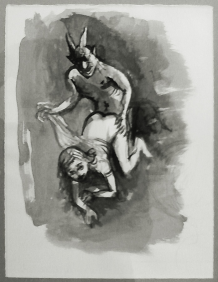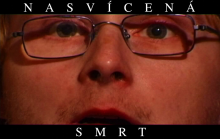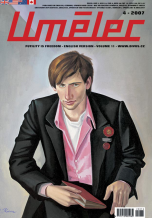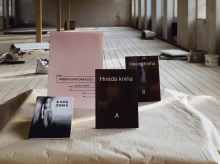| Umělec 2005/3 >> Editorial | Просмотр всех номеров | ||||||||||||
|
|||||||||||||
EditorialUmělec 2005/301.03.2005 Jiří Ptáček | editorial | en cs de es |
|||||||||||||
|
Umělec (the magazine) and an Artist (Umělec) on the Border
The previous issue of Umělec magazine came out in three language versions: Czech, English and, for the first time, also in German. The issue you are holding in your hands now is being published in four versions altogether. By request of the Prague Theater Institute, which started the season of Czech theater in countries of Latin America, we had the magazine translated into Spanish too. That doesn’t mean Umělec will be published in Spanish regularly. It is, rather, a unique opportunity to show what Europeans look for in visual culture and to explore the potential of sharing these topics with people in South America. Umělec is expected to be crossing the Atlantic ocean already in September, with the first batch accompanied by our publisher. After that, some of the editors are planning to introduce the magazine in Spain. Traveling with copies of Umělec is no holiday. Indeed, it is a means to secure a future for the magazine. It has been demonstrated that without personal relationships with artists, curators and journalists, it is difficult to build cultural bridges and to build dialog. The editors must therefore stand the loss of several weekends on trains and in airports. Only then can they transfer to the others the enthusiasm to publish an unusual magazine. Our editor for the countries of the former Soviet Union is Alena Boika, who comes from Belarus. Recently, the non-profit organization where she worked, one that did not embrace the totalitarian regime there, was closed. Fortunately, she obtained an international visa and could at least travel outside of Belarus. In Berlin, she helped us present the first German issue, and in Prague she elaborated on the theme of contemporary Ukrainian culture. Then she went to Lithuania on behalf of Umělec to the first biennial of experimental art in Alytus, entitled the International Festival of Experimental Art BEWARE! POLITICS! It was when she arrived at the Czech-Polish border that her troubles began; she learned that not even her valid visa, which allowed her to go to Germany and return without any problems, would enable her to return from Lithuania to the Czech Republic. We still do not know the consequences, as the Alytus biennial did not finish before our copy deadline, and Alena has not set off for her return journey yet. Originally, she was supposed to secure contributions from Moldova and Central Asia for the future issues of the magazine. She now suspects that it is rather a return to the misery of the Lukashenko regime that is awaiting her. Such stories are reminiscent of problems on the Czechoslovak border under Communism; indeed, Czech bureaucracy, which dates even to the Habsburgs, persists. We are astonished by the ever shifting boundaries of the European fraternity and we can only gaze agape as a system, crafted to catch crooks on the border has succeeded only in netting one brilliant Belarusian intellectual.
01.03.2005
Рекомендуемые статьи
|
|||||||||||||
|
04.02.2020 10:17
Letošní 50. ročník Art Basel přilákal celkem 93 000 návštěvníků a sběratelů z 80 zemí světa. 290 prémiových galerií představilo umělecká díla od počátku 20. století až po současnost. Hlavní sektor přehlídky, tradičně v prvním patře výstavního prostoru, představil 232 předních galerií z celého světa nabízející umění nejvyšší kvality. Veletrh ukázal vzestupný trend prodeje prostřednictvím galerií jak soukromým sbírkám, tak i institucím. Kromě hlavního veletrhu stály za návštěvu i ty přidružené: Volta, Liste a Photo Basel, k tomu doprovodné programy a výstavy v místních institucích, které kvalitou daleko přesahují hranice města tj. Kunsthalle Basel, Kunstmuseum, Tinguely muzeum nebo Fondation Beyeler.
|






























 New book by I.M.Jirous in English at our online bookshop.
New book by I.M.Jirous in English at our online bookshop.
Комментарии
Статья не была прокомментированаДобавить новый комментарий